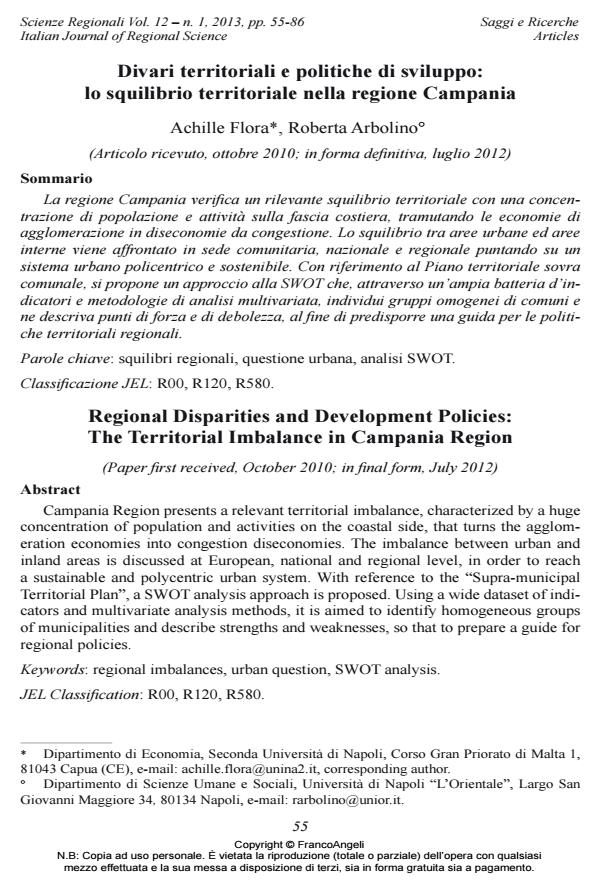Regional Disparities and Development Policies: The Territorial Imbalance in Campania Region
Journal title SCIENZE REGIONALI
Author/s Achille Flora, Roberta Arbolino
Publishing Year 2013 Issue 2013/1
Language Italian Pages 31 P. 55-85 File size 268 KB
DOI 10.3280/SCRE2013-001004
DOI is like a bar code for intellectual property: to have more infomation
click here
Below, you can see the article first page
If you want to buy this article in PDF format, you can do it, following the instructions to buy download credits

FrancoAngeli is member of Publishers International Linking Association, Inc (PILA), a not-for-profit association which run the CrossRef service enabling links to and from online scholarly content.
Campania Region presents a relevant territorial imbalance, characterized by a huge concentration of population and activities on the coastal side, that turns the agglomeration economies into congestion diseconomies. The imbalance between urban and inland areas is discussed at European, national and regional level, in order to reach a sustainable and polycentric urban system. With reference to the "Supra-municipal Territorial Plan", a SWOT analysis approach is proposed. Using a wide dataset of indicators and multivariate analysis methods, it is aimed to identify homogeneous groups of municipalities and describe strengths and weaknesses, so that to prepare a guide for regional policies.
Keywords: Regional imbalances, urban question, SWOT analysis
Jel codes: R00, R120, R580.
- A Methodological Approach for Assessing Policies: The Case of the Environmental Tax Reform at European Level R. Arbolino, O. Romano, in Procedia Economics and Finance /2014 pp.202
DOI: 10.1016/S2212-5671(14)00895-8
Achille Flora, Roberta Arbolino, Divari territoriali e politiche di sviluppo: lo squilibrio territoriale nella regione Campania in "SCIENZE REGIONALI " 1/2013, pp 55-85, DOI: 10.3280/SCRE2013-001004